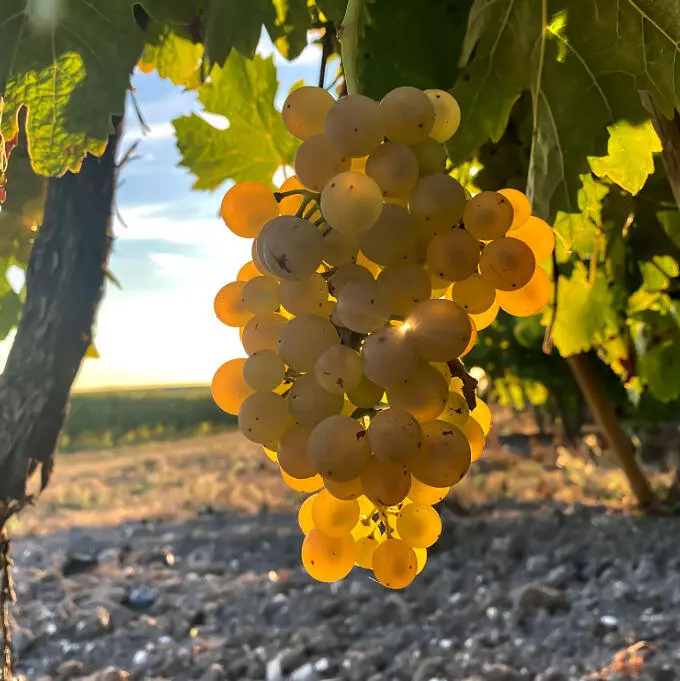The vine is originally a wild liana that has been domesticated by man to optimise the quantity and quality of its production. The vine is probably the most known plant with tendrils
The vine tendril : How it works
In June, the vegetation develops: buds, branches and inflorescences grow. Before cutting the trellis, the winegrower will help the orientation of the branches by raising them and interlacing them.
The tendrils are essential because they will allow the branches to cling to various supports (wires, stakes, vine shoots...) They are formed on the young shoots and wrap themselves around the objects they touch, and lignify with time.
Tendrils are tight spirals that result from the transformation of various organs, and develop their direction of rotation according to the support.
It appears as a vegetal filament, developing on the stem opposite to the leaf, of simple form in some cases, but most often branched, generally with two branches, sometimes more. This filament remains more or less linear as long as there is no close object with which it can come into contact: the tendril then has the appearance of a fine stem without bud or a small aborted branch.
The work of the winegrower during the vine's tendril
The installation of the trellis (wires, stakes...) and the orientation of the branches upwards, favor the attachment of the tendrils to the different supports. Thanks to the tendrils, the trellis of the vineyard will be maintained by these coilings and will limit the breakage of the sprigs in stormy or windy weather.
The tendril will lignify during the ageing process: it will become wood and will remain to mark the succession of vintages in our vineyard, just like the barrels in our cellar.
Discover the next step: The veraison !






